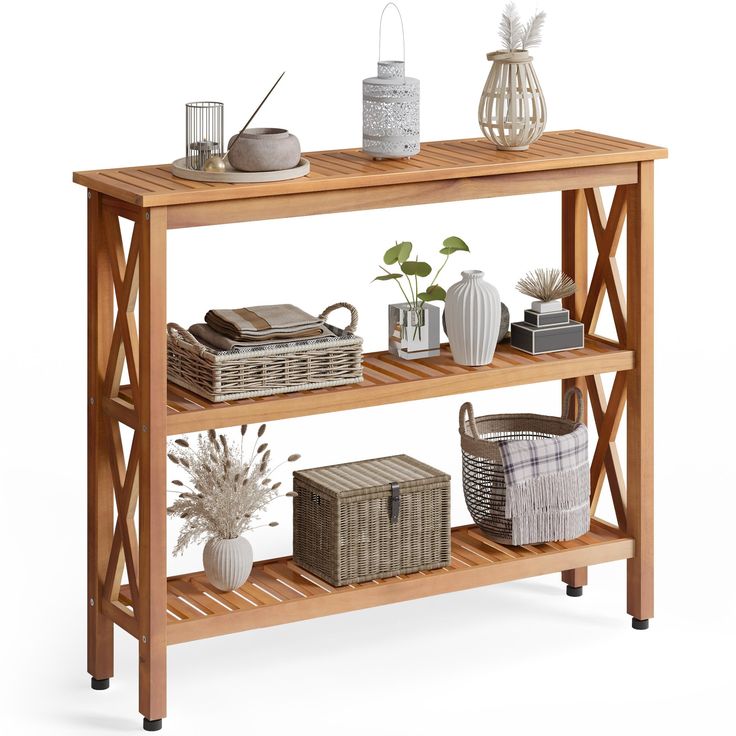Culinary enthusiasts treasure their tools, and for many, a high-quality kitchen knife bag is an essential accessory for maintaining the integrity and longevity of their beloved knives. Whether you are a professional chef or a passionate home cook, knowing how to effectively organize and protect your knives can significantly enhance your culinary experience. In this comprehensive guide, we delve into expert tips on selecting, organizing, and caring for your kitchen knife bag, all aimed at maintaining peak performance and safety in your cooking endeavors.
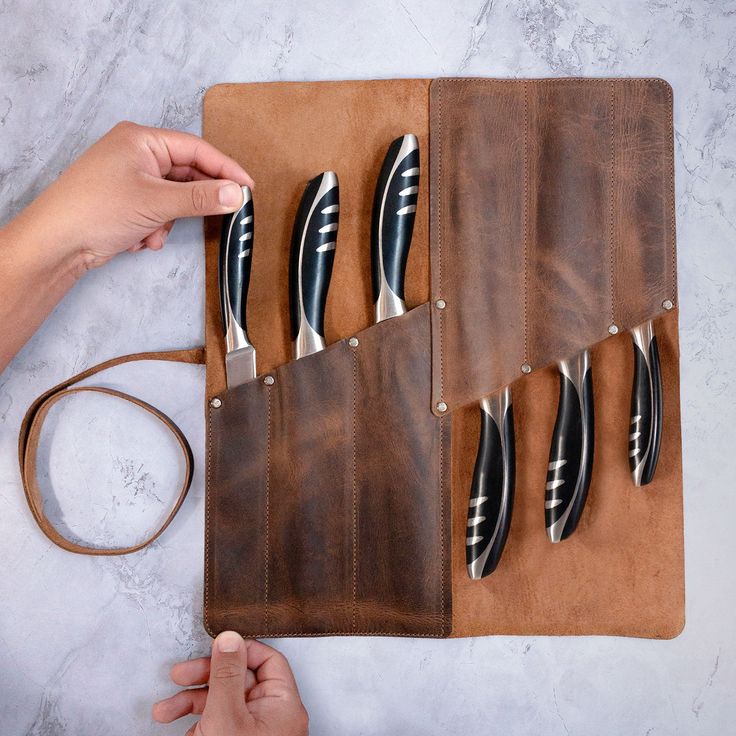
Understanding the Importance of a Knife Bag
A kitchen knife bag serves several vital functions that go beyond mere convenience. Firstly, it provides a protective environment for your knives, significantly reducing the risk of accidents and damage. When knives are left loose in a drawer or bag, they can easily suffer nicks, chips, or blunted edges that can hamper their efficiency. Additionally, a well-organized knife bag helps in keeping the edges unblemished and the blades sharp, which is crucial for precise cooking.
Another compelling reason to invest in a kitchen knife bag is portability. For chefs on the go, whether for catering events, cooking classes, or traveling, having a dedicated, organized bag makes transporting knives safer and easier. Many knife bags come with padding and protective features that ensure knives remain secure, preventing potential accidents during transport. This level of organization translates to confidence in service, allowing chefs to focus more on creating delicious meals and less on the logistics of their tools.
Furthermore, a dedicated knife bag creates a sense of pride for the culinary enthusiast. When you see your knives beautifully arranged and well taken care of, it fosters the importance of these tools in your cooking journey. As we dive deeper into organizing your kitchen knife bag, keep in mind that a well-managed collection of knives can elevate not just your culinary prowess but also your satisfaction in the craft.
Choosing the Right Knife Bag for Your Needs
Finding the right kitchen knife bag is paramount, as it directly impacts how well you can organize and protect your knives. There are various factors to consider before making a purchase, including size, material, and design. Start by assessing your knife collection—how many knives do you need to store, and what types do you possess? Some bags cater to only a few knives, while others can accommodate an extensive collection.
Material plays a critical role in durability and protection. Leather and heavy-duty canvas bags offer great protection against wear and tear. They often have padded sections to safeguard your blades. If you travel often, consider a water-resistant synthetic material. This option provides extra protection against moisture and spills.
Next, consider the design and functionality of the bag. A good knife bag will have dedicated slots or inserts for knives, preventing them from moving around and causing damage during transit. Some bags also include additional compartments for holding accessories like honing steels, scissors, and even recipe cards or notebooks. A well-designed bag enhances your kitchen experience and keeps all essential tools within reach.
Ultimately, take the time to research various brands before buying a knife bag. Read reviews from other culinary enthusiasts to find the best option for your needs. Investing in a quality knife bag can extend the lifespan of your knives. It also improves the quality of your culinary creations.
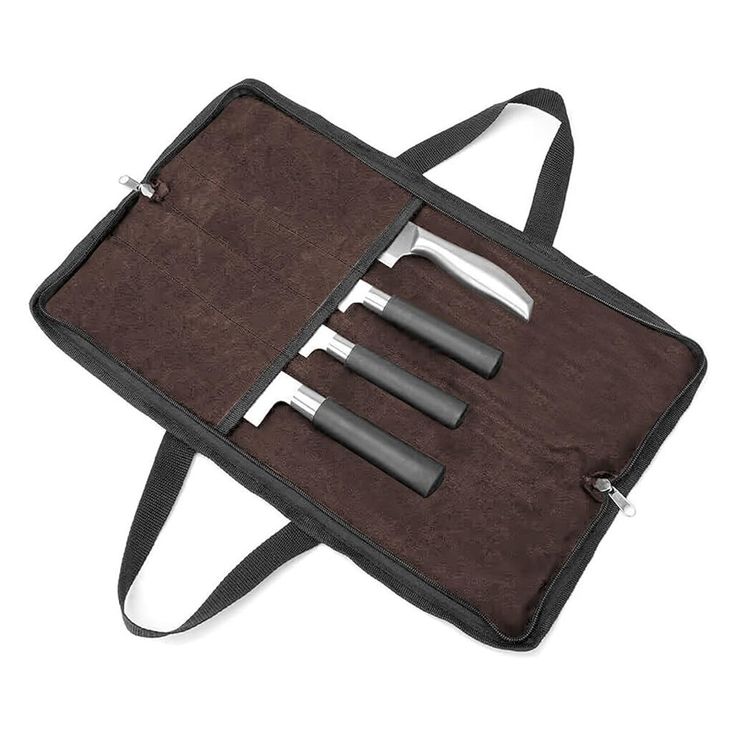
Creating an Efficient Organization System
When organizing your kitchen knife bag, a strategic approach will help ensure that you quickly find the knife you need while keeping everything in excellent condition. Begin with categorization: group knives based on their use. For example, separate your chef’s knives, paring knives, and serrated knives into designated sections within your bag.
Next, consider the order of placement. Place your most frequently used knives at the top of the bag, where they are easily accessible. Less frequently used knives can be stored in the larger compartments at the bottom. This organization not only enhances efficiency during cooking but also makes it easy to spot any knives that might have gone missing.
Maintain a consistent system for where each knife lives. Creating a ‘designated spot’ for each knife within the bag allows you to quickly notice whether a knife is missing. With a specific organization system in place, you’ll instinctively know the layout of your bag, enabling you to grab the right tool with ease when under pressure.
If your knife bag allows for it, consider using knife guards or sheaths for added protection. While many bags come with their own compartments, using guards can prevent knives from dulling against each other or accidentally cutting through the bag material. This extra layer of care can extend the life of your knives significantly.
Caring for Your Knife Bag
While maintaining your knives is crucial, caring for your kitchen knife bag ensures it remains a reliable companion for years to come. Regular cleaning and proper storage will help keep both your bag and knives in perfect condition. Start by emptying the bag and wiping down surfaces with a damp cloth to remove any dirt or grease that might accumulate.
If your bag is made of fabric or canvas, it is essential to follow the manufacturer’s cleaning instructions carefully. Most knife bags can be spot-cleaned, but avoid submerging your bag in water unless you’re sure about the materials used. Pay extra attention to stains and marks, as these can linger over time if not addressed promptly.
Inspect the compartments and slots regularly for any signs of wear and tear. Look for loose stitching or damaged zippers, as these can compromise the integrity of your knife bag. Taking immediate action to repair minor damages can prolong the lifespan of your bag significantly.
Lastly, ensure your knife bag is stored in a cool, dry place away from direct sunlight. Excess heat or moisture can damage both the knives and the bag material, leading to deterioration over time. By following these simple maintenance tips, you can ensure that your kitchen knife bag continues to serve you well, keeping your knives organized and protected.
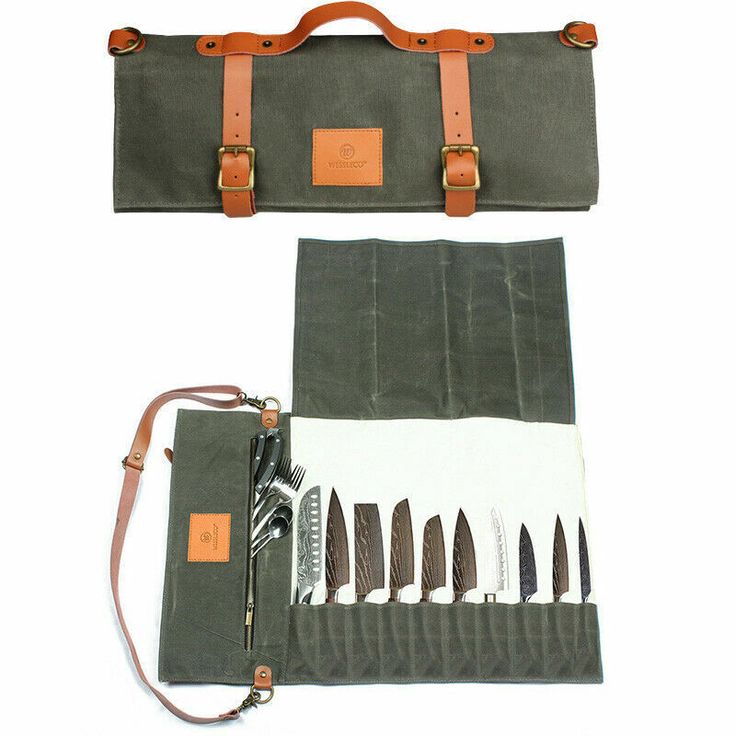
The Role of Accessories in Knife Bag Organization
While a knife bag is the primary storage solution, the right accessories can further enhance organization and functionality. Consider investing in knife guards, which help protect blades from potential damage during transport. These guards are designed to fit securely over the knife edges, ensuring that they remain sharp and ready for use.
Additionally, a honing steel or sharpening tool, stored safely in your knife bag, allows you to maintain your knife’s sharpness on the go. Including these tools in your bag emphasizes a commitment to maintaining high-quality performance in your culinary tasks.
Consider adding a knife roll or wrap to your bag. These designs allow you to unfurl and display your knives for easy access while cooking. Knife rolls feature elastic slots that hold each knife securely. This setup provides a compact way to transport your tools efficiently.
Other accessories may include small pouches for holding utility tools like scissors, tweezers for plating, or even a digital thermometer for precision cooking. Adding these elements elevates your organizational strategy, ensuring that you have everything at your fingertips without compromising safety or efficiency.
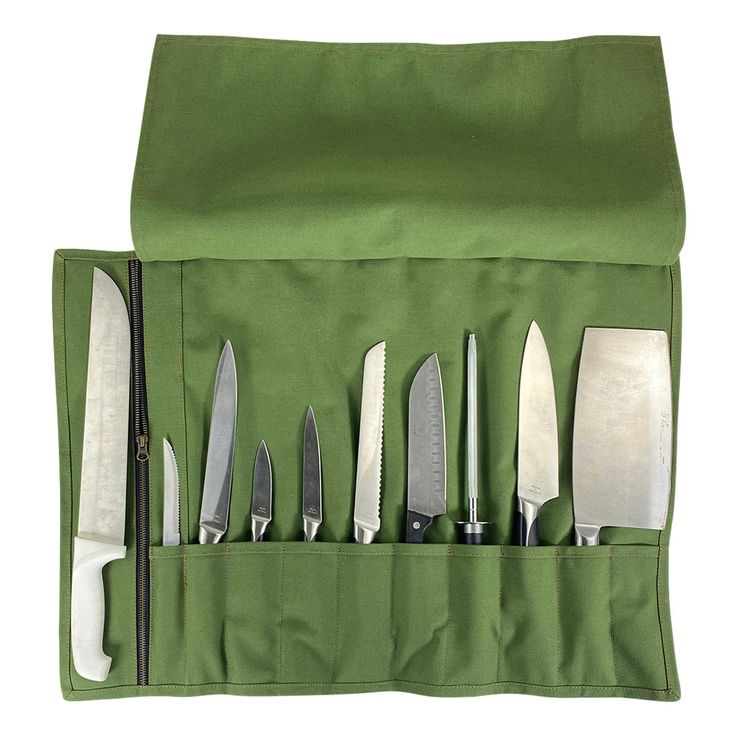
Safety First: Protecting Yourself and Your Knives
Safety is paramount when it comes to kitchen knife storage. Knives are inherently dangerous tools, and a well-organized knife bag plays a critical role in reducing accidents. Always adhere to safety guidelines when handling knives—this means never trying to catch a falling knife and ensuring you store knives blade-down or securely.
Inside your knife bag, remember to ensure each knife is stored securely. If a knife can slide out of its compartment during transport, it poses a risk of injury. Incorporating knife guards, or ensuring that they are firmly fitted into their designated slots, significantly mitigates this risk.
Educate yourself on the proper cleaning and maintenance of your knives, as dull blades can lead to increased risk of accidents. Sharp knives require less pressure to cut through ingredients, allowing for better control and safer usage. Regularly sharpen your knives and inspect them for signs of wear, addressing any issues before they escalate.
Finally, when using knives in the kitchen, maintain a clean and organized workspace. Keep clutter away from your cutting surface, as a clear area enhances focus and reduces the risk of accidents. Instilling these safety practices while maintaining an organized knife bag ensures you safeguard yourself and your valuable tools.
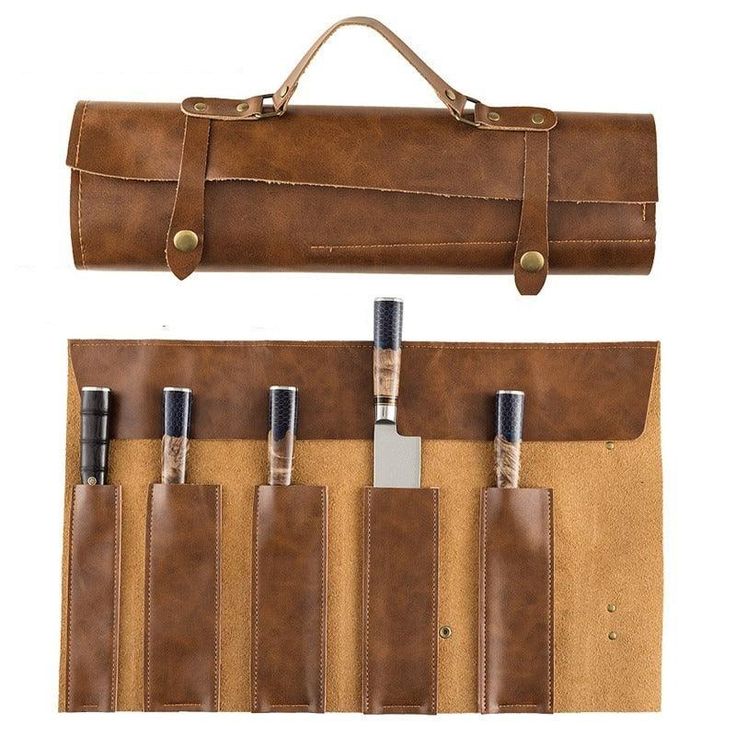
Elevating Your Culinary Experience
A well-organized kitchen knife bag does more than protect and store your knives. It serves as the foundation of a streamlined culinary experience. By investing time and effort into creating an efficient organization system, caring for your tools, and prioritizing safety, you empower yourself to explore new recipes and cooking techniques with confidence.
Imagine cooking with an organized and immaculate array of knives at your fingertips, free from the worry of searching for missing tools or the fear of dull blades. This level of preparedness transforms cooking from a chore into a delightful and creative endeavor.
Treat your kitchen knife bag as an extension of your cooking journey. This approach fosters pride and ownership in your craft. Embrace the tools that make your culinary dreams achievable. Dedicate time and resources to maintain and organize them effectively. The more you invest in your tools, the more rewarding your cooking experience will be.
In conclusion, an organized kitchen knife bag is essential for culinary enthusiasts. Understanding the importance of a knife bag and choosing the right one can enhance your cooking experience. By organizing your tools and prioritizing safety, you also nourish your passion for the culinary arts.
